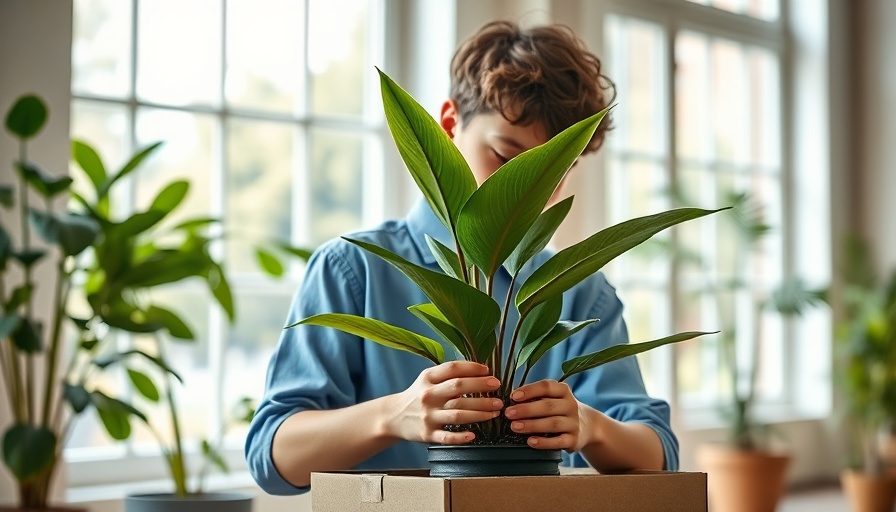
Mastering the Art of Plant Relocation: Essential Tips for Plant Lovers
Relocating your home can be an exhilarating yet daunting experience, especially if you're a passionate plant lover. Each plant represents a piece of your life—often nurtured with care and devotion. As you prepare for this significant change, it’s essential to consider how to best transport your beloved green companions. With a little advance planning and dedicated care, you can successfully move your plants into your new abode, ensuring they continue thriving. Here's everything you need to know.
Plan Ahead: The Key to Smooth Plant Transportation
The first and most crucial step in moving plants is to start planning as early as possible. A relocation involves numerous tasks, and plants should not be an afterthought. Create a timeline that includes packing your plants and organizing transportation. The earlier you start planning, the more seamless the process will be. Consider making a checklist to keep track of your tasks, prioritizing the care and transportation of your plants.
Understanding Plant Needs: A Tailored Approach
Every plant has specific needs and requirements, largely influenced by climate, space, and light conditions. Before the move, assess whether you'll be personally transporting your plants or if you'll be relying on movers. Many experts recommend keeping your plants with you, especially if they are exotic or sensitive varieties. Additionally, ensure you are aware of any legal restrictions regarding plant transportation, particularly for long-distance moves.
Final Touches: Watering and Soil Preparation
Water your plants a day or two before the move to hydrate them while avoiding excess moisture, which could lead to difficulties during transport. Carefully remove each plant from its pot, taking care not to damage the roots. A fresh layer of potting soil will provide cushioning and nutrition. Moreover, wrapping the pots in bubble wrap will help protect them during the ride.
Preparation is Key: Getting Plants Ready
Prior to the day of the move, it’s essential to prune any dead leaves or branches, creating a healthier and lighter plant. Give your indoor green friends a thorough cleaning to rid them of pests and dust that could hinder their transition. To make transportation easier on yourself, consider transferring plants into lighter plastic pots before the move.
Packaging Plants: Techniques for Safe Transit
Packing plants can be tricky, but it's vital to ensure they are secure and protected. Place them in sturdy boxes lined with materials that will cushion them against movement and impacts. Use packing paper to fill any gaps, so they’re stable and won’t topple during transit. If you have larger plants, consider using stakes for extra support, keeping them upright and minimizing stress on the roots.
After the Move: Nurturing Your Plants in Their New Home
Once you've arrived at your new house, the real work begins. Place your plants in their new spots, making sure to consider the specific light and temperature needs of each variety. Water them and give them time to acclimate before exposing them to direct sunlight. This gentle transition will help reduce shock and ensure your plants thrive in their new environment.
Embracing Change: Why Relocation is a Growth Opportunity
It can be emotionally taxing to upheave your plant family, but remember this offers a chance for renewal. Previously chosen spots may not have been optimal for your plants' growth, but now is the moment to reassess and re-strategize. Observing how your plants adapt to their new home can also inspire creativity in your new gardening setup. Embrace this transition as a chance not just for a new home, but also for a fresh start for your cherished plants.
Common Misconceptions: Debunking Plant Transportation Myths
It's a common misconception that plants do not require any specific care during transport beyond regular watering. In reality, plants are sensitive to their environment and require proper packing, acclimation, and an awareness of their light and temperature needs during the move. Understanding these key factors will help ensure a successful transition and the continued health of your plants.
Final Thoughts: A Call to Nurture Your Green Companions
Relocating with plants doesn’t have to be a source of stress; instead, view it as an opportunity for growth—both for you and your plants. Each step you take in moving them contributes to their overall health and vitality. Consider diving deeper into your gardening journey by exploring not just the relocation process but also avenues like urban farming or community gardens in your new neighborhood. Learn more about these sustainable practices that may enrich not only your gardening skills but also your community engagement.
 Add Row
Add Row  Add
Add 




 Add Row
Add Row  Add
Add 

Write A Comment